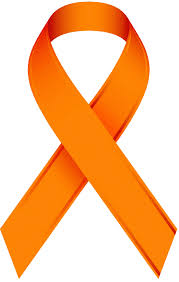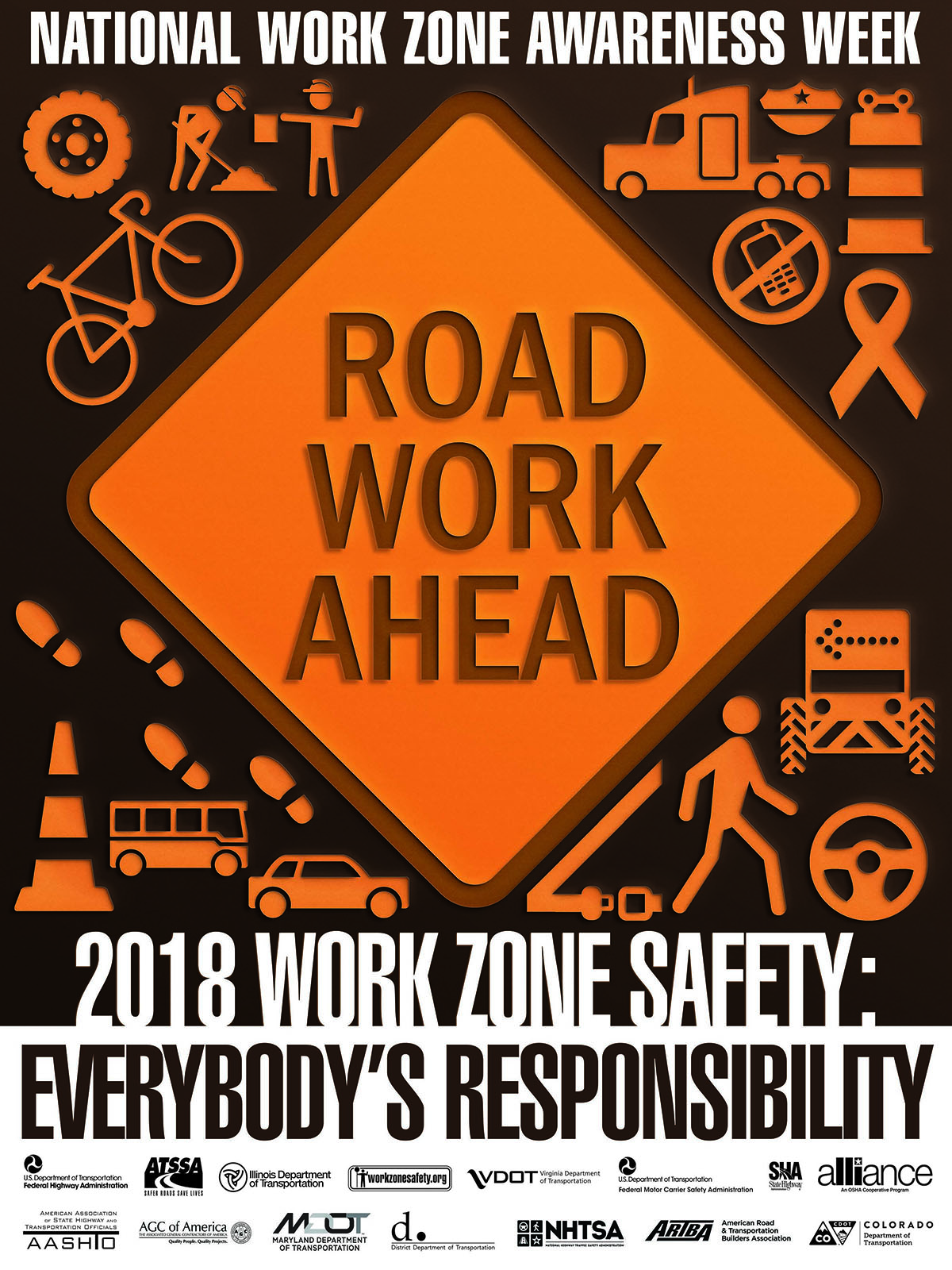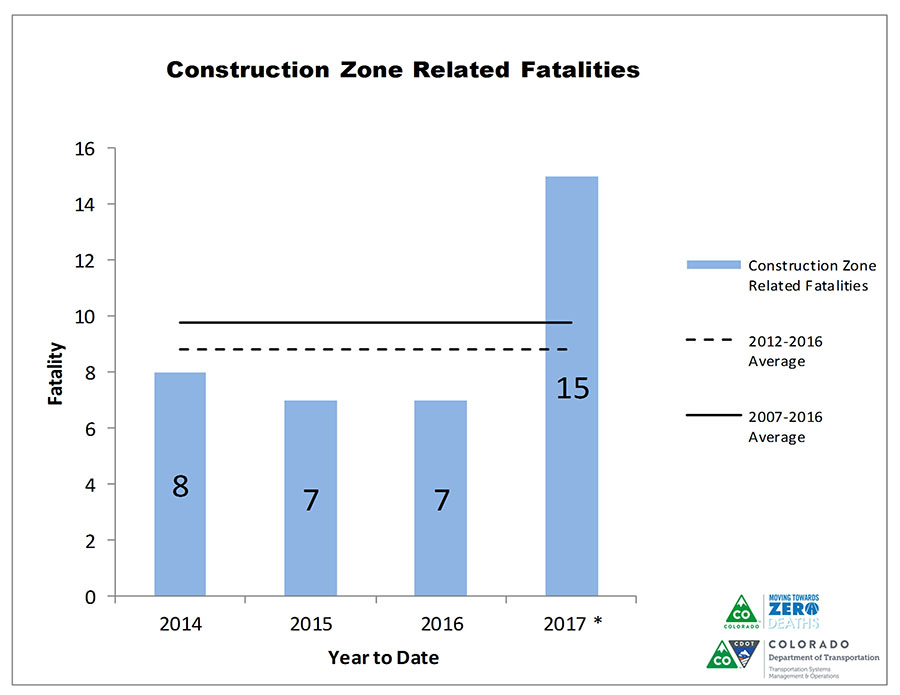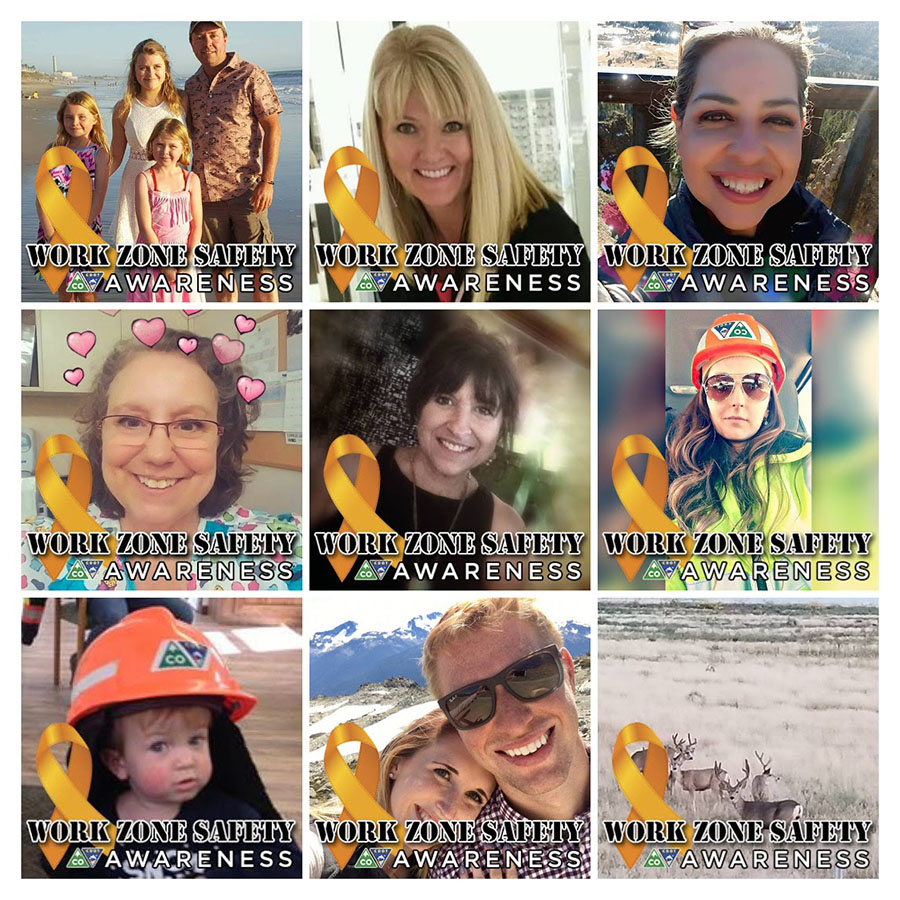Recent Colorado Death Sheds Light on National Work Zone Awareness Week

STATEWIDE—This year, National Work Zone Awareness Week is even more meaningful to the employees of CDOT because of the loss of one of its own.
CDOT Maintenance Operator Nolan Olson died earlier this year after he sustained injuries from being struck by a vehicle while working on a US highway. Olson's death sheds light on the importance of slowing down and giving undivided attention while driving through work zones.
The crash occurred on Feb. 2, when Olson—a member of the Pagosa Springs maintenance patrol—was filling potholes on US Highway 160 in Southwest Colorado. Olson was severely injured and transported to a Denver area hospital, where he received treatment for more than a week. Olson succumbed to his injuries and died on Feb. 11.
Everybody is Responsible

Each spring, National Work Zone Awareness Week is held to bring attention to safety in work zones. This year, we will celebrate April 9 -13. CDOT joins DOTs across the country supporting the awareness message and hosting events to honor those lost.
"This year's national theme is, 'Work Zone Safety: Everybody's Responsibility'," said Kyle Lester, CDOT director of maintenance. "It truly is everyone's responsibility! Our workers are trained to watch out for oncoming traffic. In turn, we ask the traveling public to be ever diligent when coming up on work zones. Give the road your full attention: don't be on your cellphones; look out for other vehicles, cyclists, and pedestrians; and please, watch for our flaggers and workers."
The 2018 National Work Zone Safety Poster depicts several images of the various hazards and obstacles encountered on our roads and in work zones, including: caution signs, cones, barrels, workers, cellphones, bicyclists, and other vehicles. The poster sends a reminder to always keep eyes on the road and to remain alert.
Sobering Statistics

In 2017, there were 15 work zone fatalities in Colorado. This was more than double the deaths that occurred over the past several years. These fatalities included workers from the private sector who work in road construction zones. (No CDOT employees were killed in 2017.)
Nationally, more than 750 people were killed in work zones in 2016. This includes total fatalities of all drivers, pedestrians, cyclists as well as construction workers. Also in 2016, 143 workers were killed in road construction zones across the country.
- Four out of five work zone fatalities are motorists.
- One work zone fatality occurs nationwide every 15 hours.
- Nationwide, one work zone injury occurs every 14 minutes.
See more national work zone fatality data.
Remembrance Day
CDOT hosts a Remembrance Day in each of its five regions, and at its headquarters, to remember those who lost their lives in the line of duty. CDOT has lost a total of 60 lives in work zone areas since 1929, with Olson's death being the most recent. CDOT keeps an online list of all those lost.
Wear Orange

In honor of National Work Zone Safety Week, CDOT asks the public to go orange. Join state employees by wearing orange on Wednesday, April 11, Go Orange Day. All roadway safety professionals across the country are encouraged to wear orange on this day to support work zone safety while also honoring the families of those who lost their lives in work zones.
Additionally, members of the public who frequent social media will also note that CDOT is promoting a "profile frame." This is a visual tool offered to followers to help heighten awareness and show support for particular causes, like work zone safety. Visit CDOT's Facebook page to learn more, and to view videos and safety tips throughout Work Zone Awareness Week.
Driving Tips
CDOT urges drivers to always drive with care, especially when traveling through work areas. Use these safe-driving tips when traveling through cone zones. The public is also reminded that in Colorado, fines are doubled for infractions in a work zone.
Be patient and stay calm.
Work zones aren't there to personally inconvenience you. Remember: The work zone crew members are working to fix and improve the road, and make your future drive better.
Expect the unexpected.
Normal speed limits may be reduced, traffic lanes may be changed, and people may be working on or near the road.
Don't tailgate.
Keep a safe distance between your car and the car ahead of you. The most common crash in a highway work zone is a rear-end collision, so leave two car lengths between you and the car in front of you.
These are just a few of the many suggestions recommended for motorists. See more tips.
